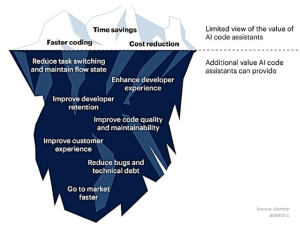
Introduction
In today’s fast-paced software development landscape, AI-powered tools are revolutionizing the way developers write, debug, and maintain code. AI code assistants have emerged as powerful companions, enabling developers to enhance efficiency, improve code quality, and accelerate time-to-market. But how do they work, and which ones stand out?
What are AI Code Assistants?
AI code assistants are intelligent tools designed to assist developers in generating, analyzing, debugging, fixing, and refactoring code. These tools leverage large language models (LLMs), program understanding technologies, or a combination of both to provide contextual code suggestions and automation.
Integrated into popular development environments like IDEs, command-line terminals, and chat interfaces, AI code assistants streamline workflows by offering:
- Code completion and generation
- Bug detection and fixes
- Code refactoring and optimization
- Documentation creation
- Code translation across languages
Some AI code assistants can even be customized to an organization’s unique codebase and documentation, ensuring seamless integration into existing workflows.
The Value of AI Code Assistants
The impact of AI code assistants goes beyond simple code completion. These tools help developers:
- Boost productivity – By automating repetitive coding tasks, developers can focus on more complex problem-solving.
- Enhance code quality – AI-powered suggestions improve accuracy and reduce errors.
- Accelerate development cycles – Faster code generation and debugging mean shorter time-to-market.
- Improve collaboration – AI assistants foster knowledge sharing within development teams.

I experimented with some AI code assistants and here is a comparative overview:
| Tool | Key Strengths |
| GitHub Copilot | Seamlessly integrates with popular IDEs; excels at inline code completions and everyday coding tasks. |
| Cursor.ai | A standalone AI-powered editor supporting multi-file edits, refactoring, and deep codebase queries. |
| Lovable.dev | A no-code/low-code solution ideal for front-end development, with some back-end integration via Supabase. |
| Bolt.new | A fully in-browser development environment, perfect for rapid full-stack prototyping with Node.js and front-end technologies. |
Use Cases & Best Fit
When choosing the right AI code assistant, understanding the best-fit scenarios is crucial:
| GitHub Copilot | Lovable.dev | Cursor.ai | Bolt.new |
|---|---|---|---|
| Inline coding assistance in your favorite IDE | No-code or low-code front-end building | Intensive coding tasks in a single editor. Suitable for complex | Full-stack prototypes without local setup |
| Great for everyday coding boosts, minimal overhead | Ideal for quickly spinning up demos or MVPs with simple backends | Perfect for deep refactoring and dev who wants advanced AI features | Ideal for quickly demonstrating end-to-end solutions or PoCs |
- For quick proof-of-concepts (PoCs): Bolt.new and Lovable.dev offer rapid development environments for experimentation.
- For deep, long-term development: GitHub Copilot and Cursor.ai provide robust solutions for scalable, production-ready coding.
Conclusion
AI code assistants are transforming software development by enabling faster, more efficient, and higher-quality coding. Whether you’re a solo developer or part of a large engineering team, leveraging the right AI code assistant can significantly enhance your workflow.
To maximize productivity, consider a hybrid approach:
- Start with Bolt.new or Lovable.dev for rapid prototyping.
- Transition to Cursor.ai or GitHub Copilot for deeper, production-level development.
As AI technology continues to evolve, embracing these tools will be key to staying ahead in the ever-changing software development landscape.
Written By: Punit Singhal








